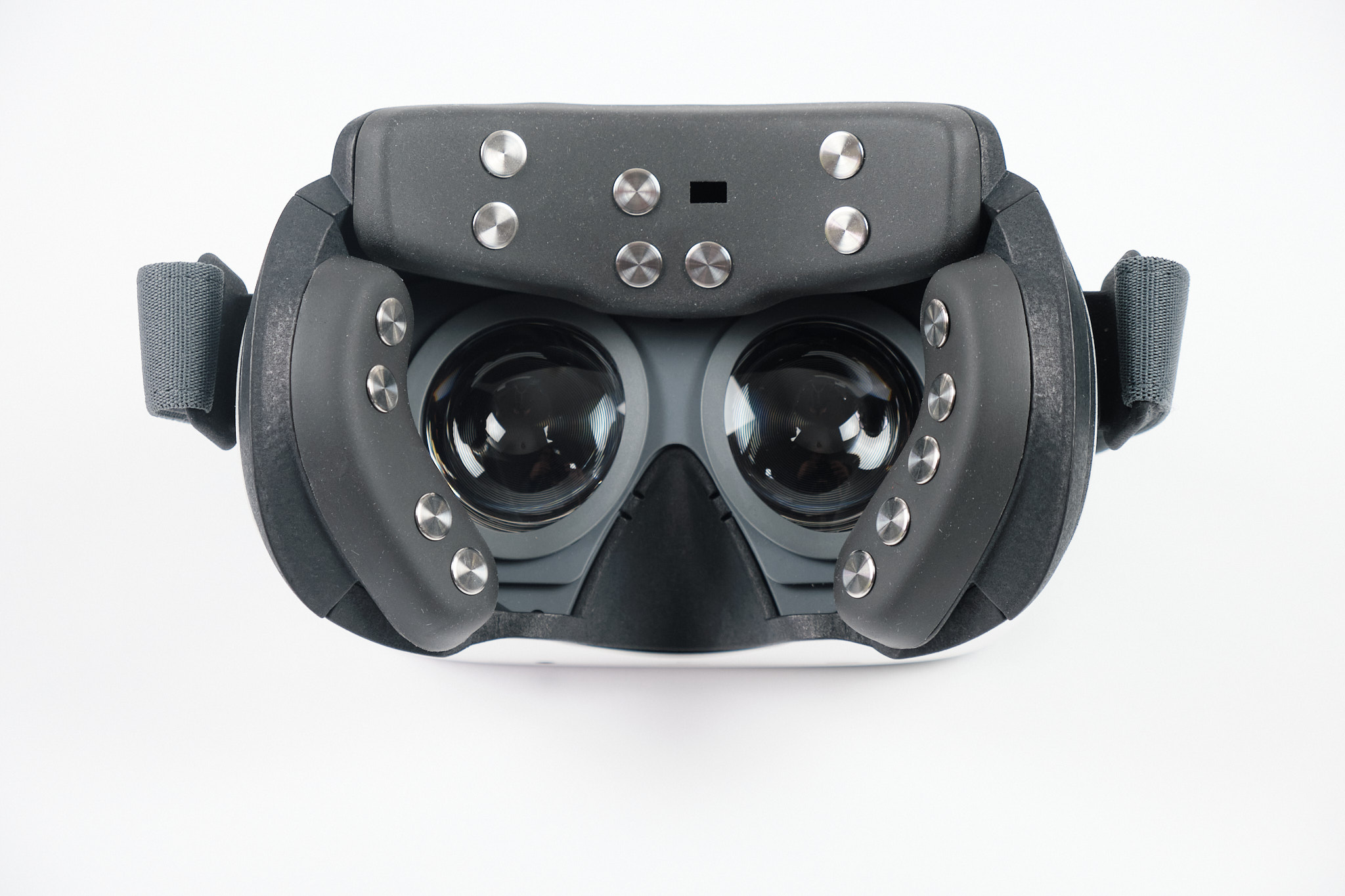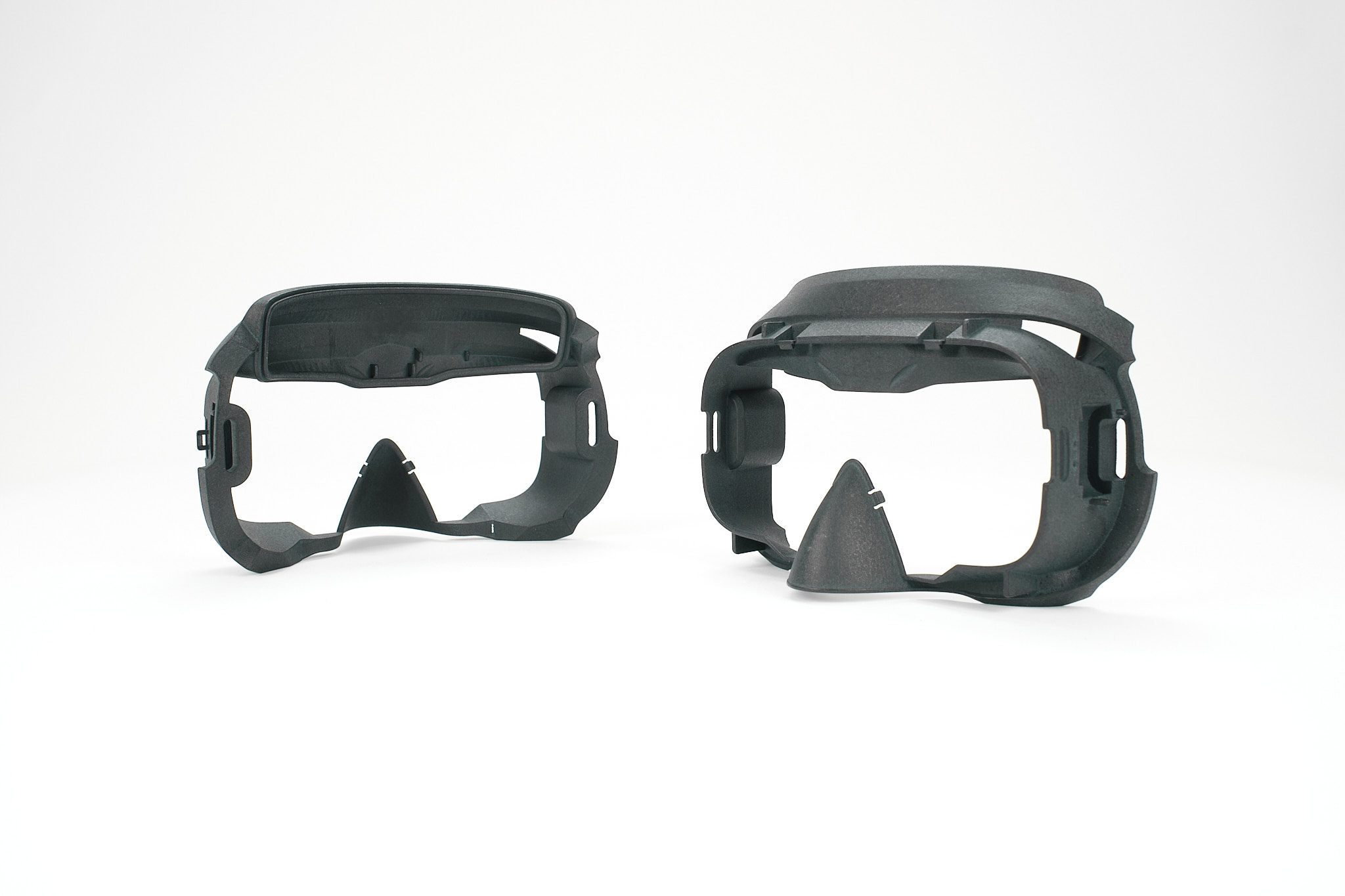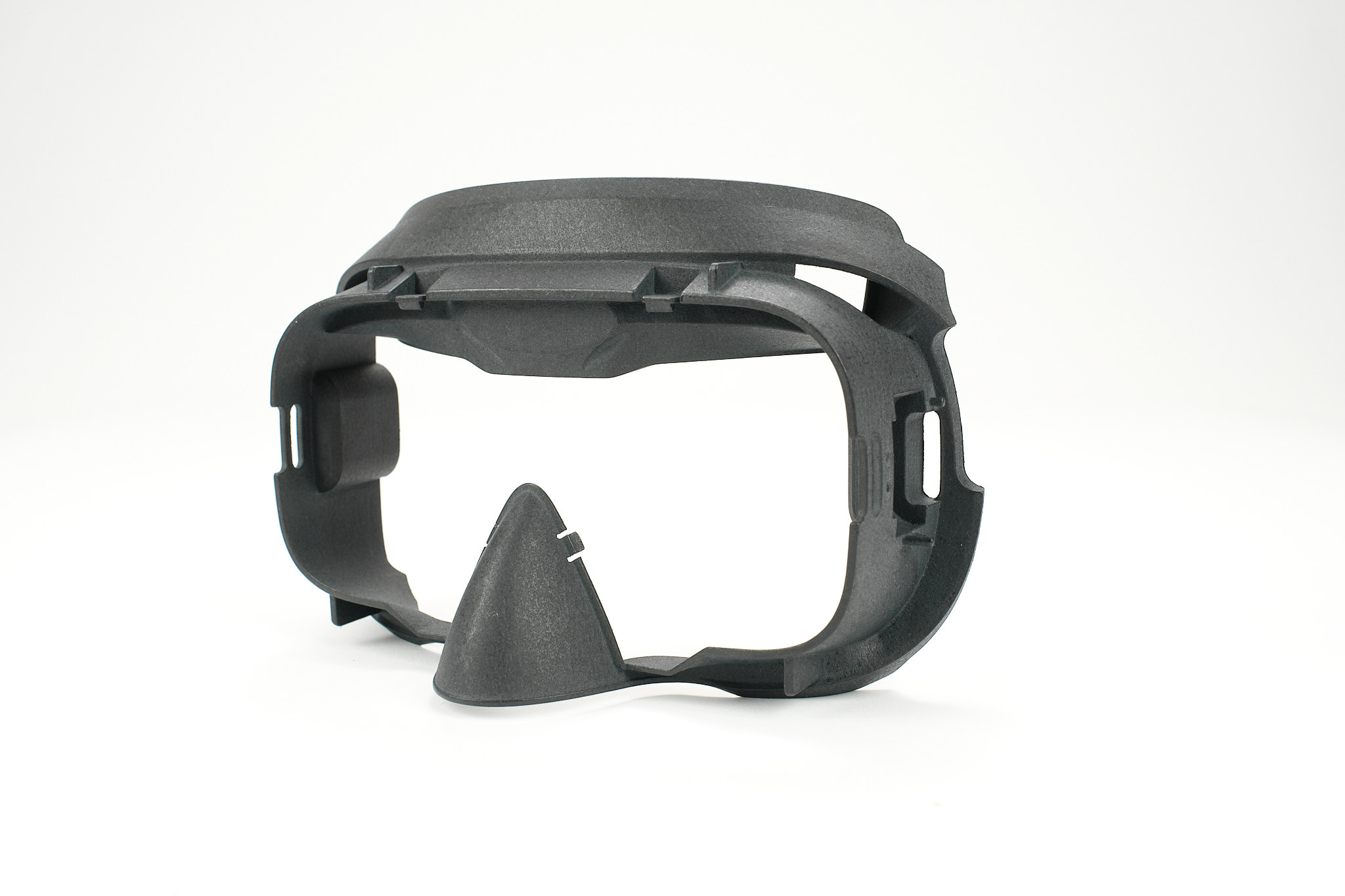Rogue Product & emteq labs
Wearable Technology: Better Prototypes, Better Products
Overview
Rogue Product is a creative industrial design consultancy based in Stansted, UK. The company utilises 3D printing often and in different ways for innovative and iterative product development for its wide variety of clients. Regularly placing orders with 3DPRINTUK for both Selective Laser Sintered (SLS) parts, and more recently Multi Jet Fusion (MJF) parts, here designer Graham England talks to us about how and why 3DPRINTUK is a trusted supplier of 3D printed parts.
3DPUK: Can you tell us a little about Rogue Product and what you do?
Graham England, RP: We’re a creative industrial design consultancy with dedicated technical expertise that we integrate with innovative design capabilities. We work closely with our clients to ensure the best possible outcome both in terms of aesthetics and functionality of the design. This dual approach is vital for a number of our customers, particularly within the gaming and virtual reality (VR) sectors. For example, we worked with Oculus VR on their successful Kickstarter campaign to develop the revolutionary DK1 VR headset. The campaign had one of the fastest uptakes in Kickstarter history.
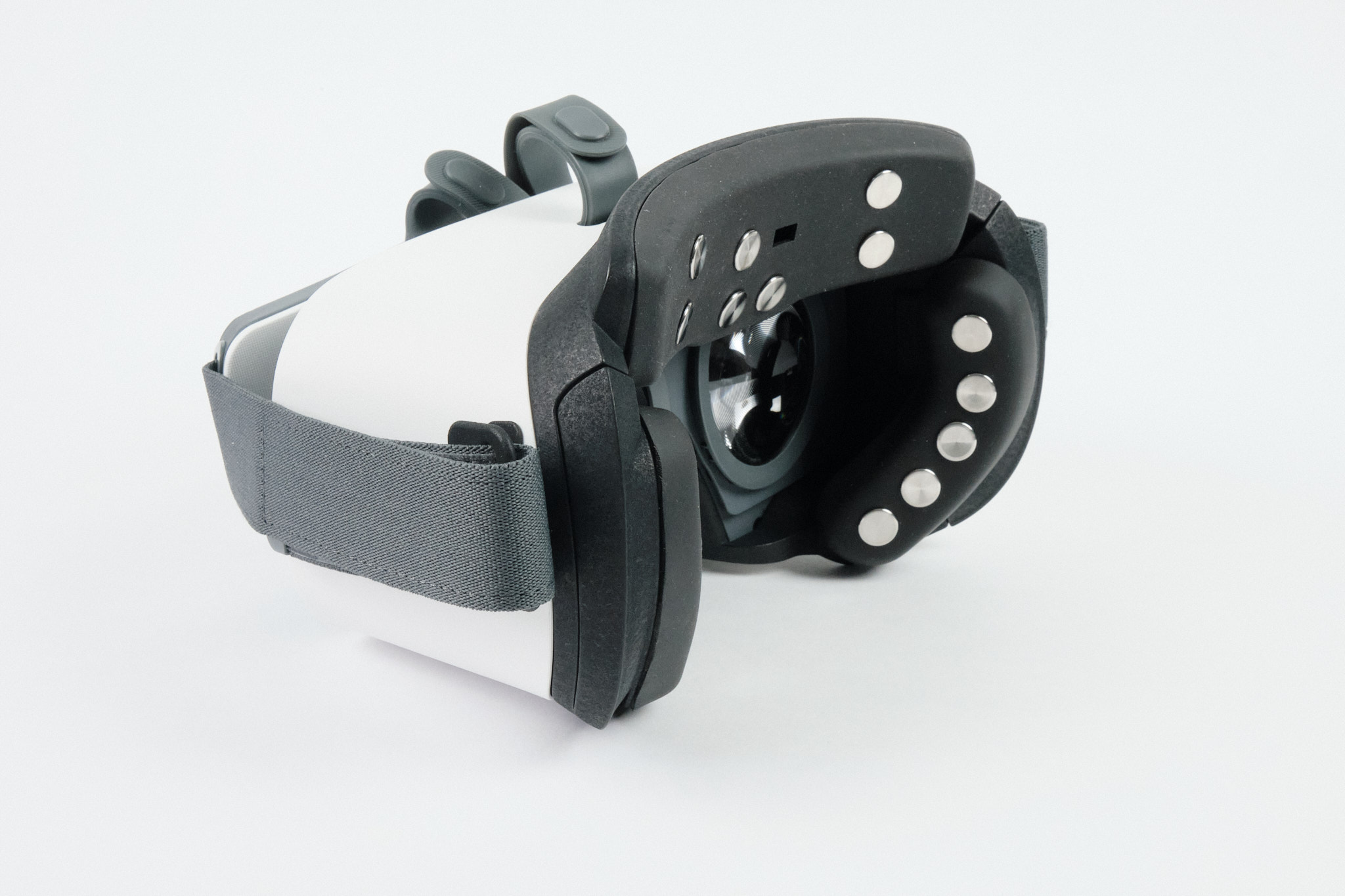
3DPUK: How are you primarily using 3D printing and how does it support the development of both form and function of products/parts?
Graham England, RP: Primarily we’re using 3D printing as a design tool within a highly iterative process. I should state that we do have in house 3D printing capability — we’ve got an Ultimaker which is an FDM style printer. Also, before lockdown we were in a coworking space where we had access to a Formlabs stereolithography (SL) system. Both of these are desktop machines that allowed us to produce a number of early stage models to develop the conceptual form quickly and easily. These are simple 3D printed prototypes, and in our experience, not usually suitable for full functional testing.
What we like about 3DPRINTUK and the SLS parts they produce is the strength and resilience of the material. This is vital for market testing of functional prototypes. We work a lot in the wearable tech area and so people are experimenting with prototypes and very rapidly iterating different design options. Producing those parts in house on our desktop systems just isn’t practical as it takes too long and the materials available to us are not resilient enough.
We’re using 3DPRINTUK to gain the functionality and robustness we need so that when we release parts to the client we’re confident they’ll be up to the job.
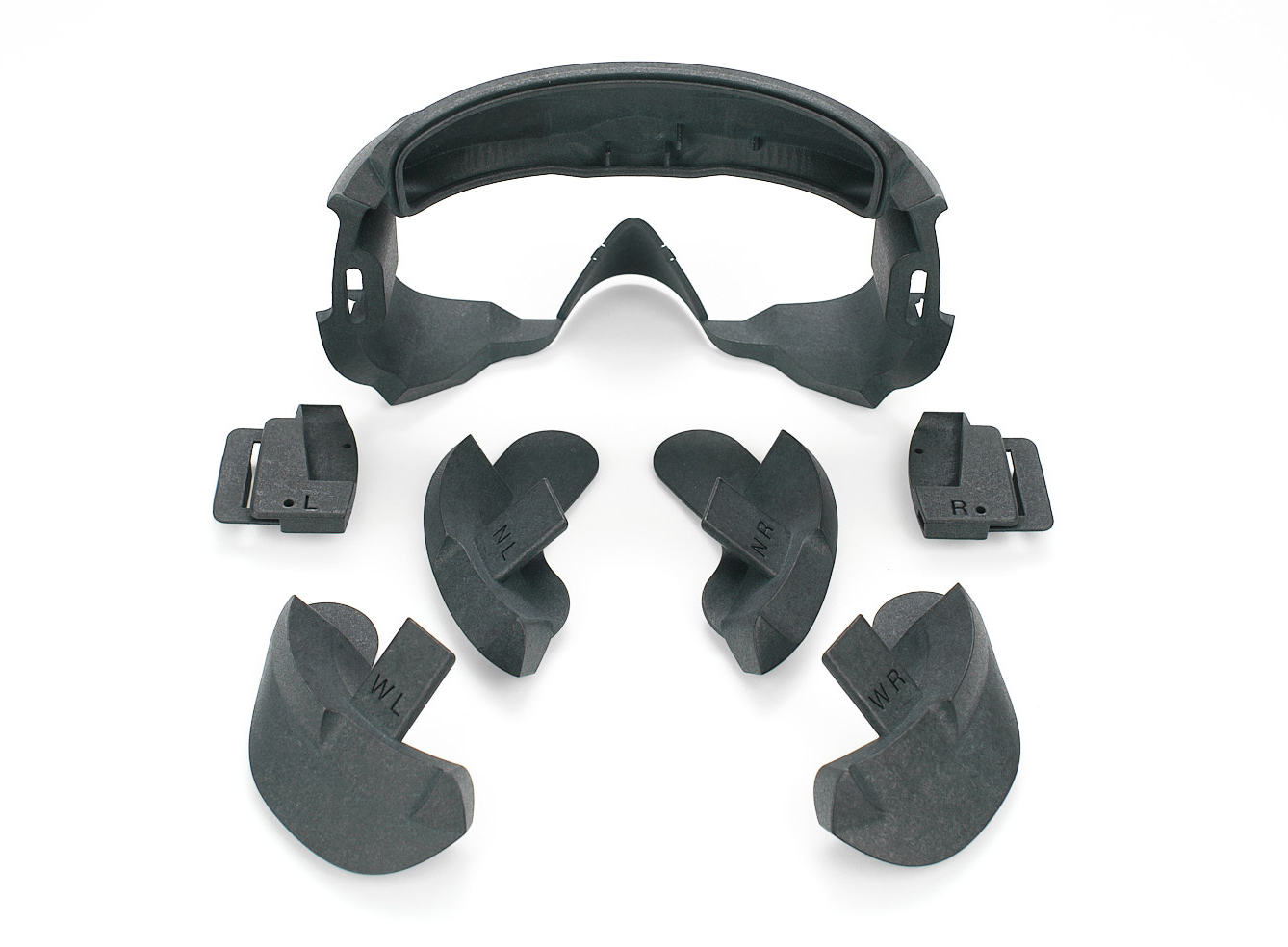
“The service and quality of parts has always been amazing, they are really on it so that is definitely a plus.”
3DPUK: You use 3DPRINTUK for both SLS and MJF part production — can you tell us how and why you use these different 3D printing technologies?
Graham England, RP: Yes, we like the MJF parts because they are so much cheaper and the quality is still good. We still order SLS parts for some projects because we require the clean, white look and/or the mechanical properties that SLS offers.
But, if we take emteq as an example again with the highly iterative design process, the MJF parts virtually halve the cost, so that’s amazing for them. The strength of the parts is fine for functional testing and they do not have to be white in this instance.
Earlier in the year, as Covid-19 was spreading rapidly throughout the UK, Rogue Product were awarded an Innovate UK grant as part of the Business-led innovation in response to global disruption competition. Our solution was to develop a bespoke 3D printed interface that fits directly onto a user’s face and provides a more comfortable and reliable fit for standard FFP3 facemasks. Flexible and super accurate SLS parts have been a key requirement of this project and continue to be so as it moves towards a mass production solution.
This facemask project also highlights one of the issues with 3D printing, specifically biocompatibility of most of the materials available. As a result, we’re working with silicone and other types of coating that give the SLS parts a biocompatible finish that users can wear safely next to their skin. While 3D printing is a good fit with wearables in ways such as individual customization, the issue of finding biocompatible materials often remains.
3DPUK: What are the highlights of working with 3DPRINTUK?
Graham England, RP: A key advantage of working with 3DPUK is their online quoting and ordering portal. This system allows us to upload parts and get an instant price and instant feedback which is really useful, especially when you’re putting together quick cost estimates for clients— it is brilliant.
In addition, the service and quality of parts has always been amazing, they’re really on it so that is definitely a plus. The prices have always been good and have got even better now that they offer MJF as well as SLS. We’ve got a good working relationship with the 3DPRINTUK team and find them helpful and always reliable.
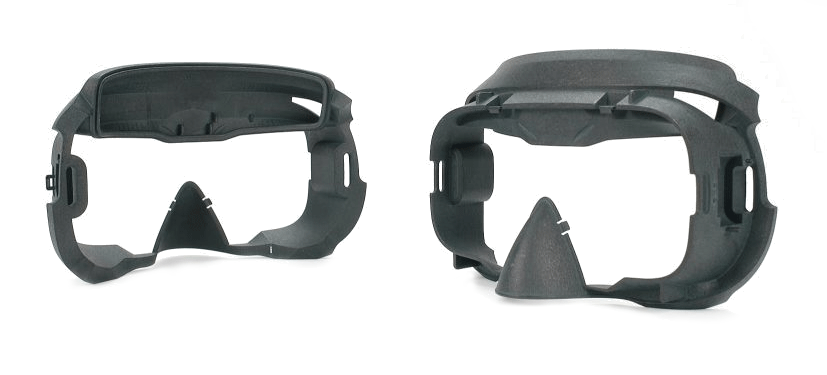
A working supply chain supported by 3DPRINTUK
Rogue Product’s client emteq labs is developing both hardware and software within the emerging VR / AR sector.
Based in Brighton, UK, the smart device manufacturer has established itself as a market leader in wearable technology for the monitoring and translation of human intent and expression into credible and actionable feedback about behavior via a device that attaches to a VR headset. This integrated solution can provide insight for the measurement of emotions through facial muscle activity and biometric responses and can be used for research, training, therapy and content creation applications.
According to Graham England at Rogue Product, who is working directly with emteq on product development, they regularly order prototype parts from 3DPRINTUK for the functionality and robustness of the finished units. The prototypes are always rigorously tested and, actually, it looks like they’re going to be utilising 3DPRINTUK’s capabilities and reliable delivery for the end use product. This advanced device fits this production model because it is a high value, low volume item and 3D printing is proving to be a cost effective way for them to go.
This emteq project is a really great example of a design development process evolved into a first batch production run, with more to follow.
